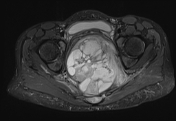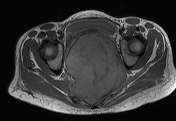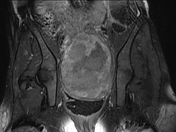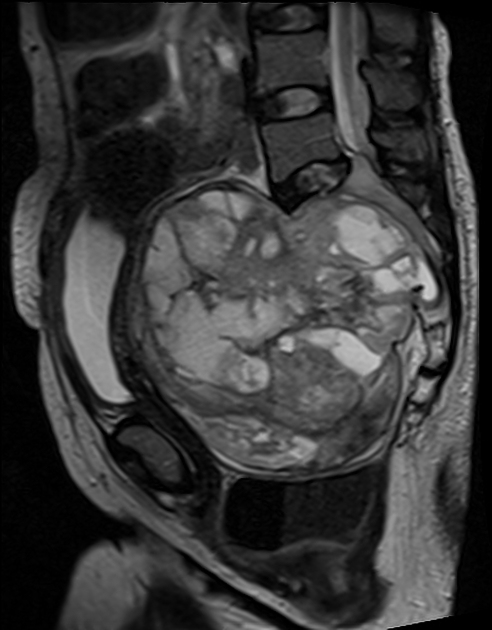Presentation
Pelvic swelling with severe low back pain.
Patient Data









A huge well-defined heterogeneous solid lesion of mixed-signal intensity is demonstrated in the pelvis, arising from the sacrum. It shows heterogeneous postcontrast enhancement.
Case Discussion
Schwannomas are very rarely seen in the sacral region and constitute 1-5% of all spinal schwannomas. They are mostly benign lesions.
Giant invasive spinal schwannomas are masses that invade more than 2 vertebral levels, invade vertebral bodies and by extending posteriorly, reach the myofascial regions. They often present with pains and neurological symptoms.
MR findings, in this case, show a solid lesion of mixed-intensity with a heterogeneous contrast enhancement demonstrated anterior to the sacrum. It measures 14.0 x 13.1 x 9.8 cm. There is a foraminal extension of the mass with the destruction of the sacral vertebrae.




 Unable to process the form. Check for errors and try again.
Unable to process the form. Check for errors and try again.